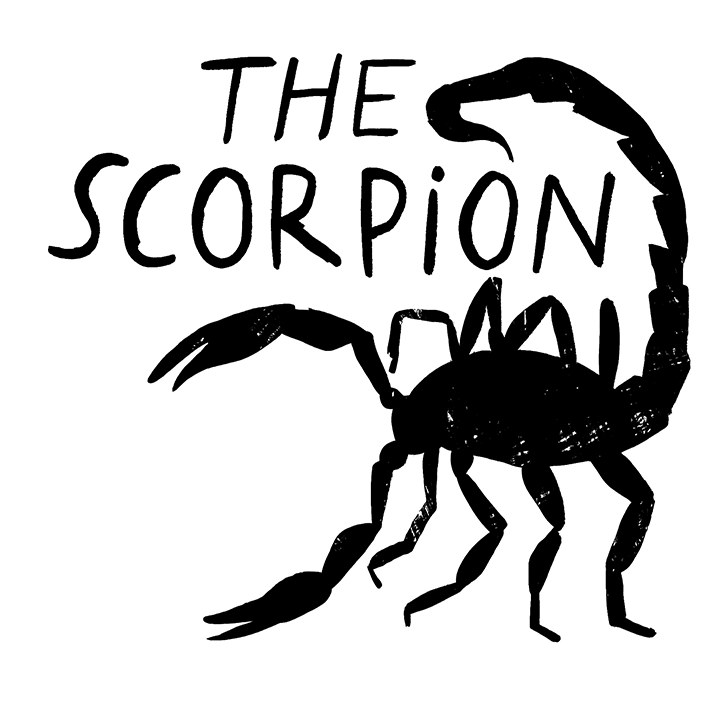Scorpions and scorpion products are in use for medical purpose in many countries across the Indian ocean. Stories about this animal were gathered and written by students. They are all part of a pedagogical project, funded by the National University of Singapore and the Université de Paris. The Bestiary site is a work-in-progress and a participatory educational tool, representing animals whose products or body parts are used to promote health and healing.
Sun-Dried Scorpions
A Story by Soh Jun Han, Owen
Scorpions are predatory arachnids with an evolutionary history going back 435 million years. They can be found on all continents except Antarctica, and are easily identified by their pincers and stinger.
From a cultural and religious standpoint, the scorpion is identified as a protective force as well as an embodiment of evil. In Tibet, the scorpion symbolises negative or harmful action. Among the Tibetan Buddhists, the polarity of ‘good and evil’ does not exist – there is only an enlightened state of ‘good’ as well as a distortion of that ‘good’. The scorpion is thought to have transformed into the latter, and has been used as a representation that everyone can obtain the enlightened state of ‘good’ through compassion. In China the scorpion emblem is used as a charm to defend against evil powers. The scorpion symbol is used alongside 4 other symbols, namely the spider, viper, toad and centipede, and families with one son usually worship these five symbols for protection. These families even have motifs embroidered with black silk thread on a read cloth for the child to wear, which is believed to prevent illness. In China, the character 万 that symbolises 10,000, is derived from the scorpion symbol.
From a traditional medicine standpoint, the scorpion is commonly used to stop spasms and subdue endogenous wind, as well as to dispel toxins and wind. Scorpions are usually caught in spring or autumn, and are then boiled and subsequently sun-dried. Due to its pungent and neutral properties, it is associated with the liver meridian, and it is often combined with other medicinal herbs to treat convulsions and spasms of the hand and feet. Some practitioners also recommend scorpion as a cure for headaches and joint aches.
Value in Asian medicine The scorpion has a stinger on its back, and while most species possess a sting which can be compared to that of a bee sting, there are a few scorpion species that have a sting venomous enough to kill humans (“Researchers from Kongju National University Discuss Findings in Zoonoses,” 2021). This definitely is a threat to humans, and could negatively affect our wellbeing.
Despite this, humans have been known to consume scorpions, especially in Asian countries such as Vietnam and Thailand. From a food hygiene point of view, the consumption of scorpion is not as hygienic as one might think. Research has found out that there are seven different families of bacteria in a raw scorpion, of which five are pathogenic to humans (Grabowski & Klein, 2021). This shows that the scorpion is indeed a zoonosis carrier, and it further highlights the importance of washing and heating up scorpions before consumption. The consumption of scorpion is also common in many forager societies (e.g. indigenous Australian, Papuan, Indonesian or Amazonians). They consume scorpion to improve their diet, and the knowledge of which species may be eaten under specific conditions is passed on orally through generations of people (Grabowski & Klein, 2021). Hence, diseases caused by the consumption of scorpion is kept minimal.
In addition to the usage of scorpions in TCM, to stop spasms, subdue endogenous wind and treat convulsions in the hand and feet, they are also used in western medicine. Researchers from Kongju National University found out that the antimicrobial peptide Css54 can be derived from scorpion venom. Css54 exerts potent antimicrobial activity through a disruption of the bacterial membrane of zoonotic bacteria. With this, Css54 can be used as an alternative to antibiotics in humans and animal husbandry (“Researchers from Kongju National University Discuss Findings in Zoonoses”, 2021) With this, we can see that the usage of scorpion in medical purposes can be utilised both in a “traditional” and “modern” sense, where TCM is the former while western medicine is the latter.




